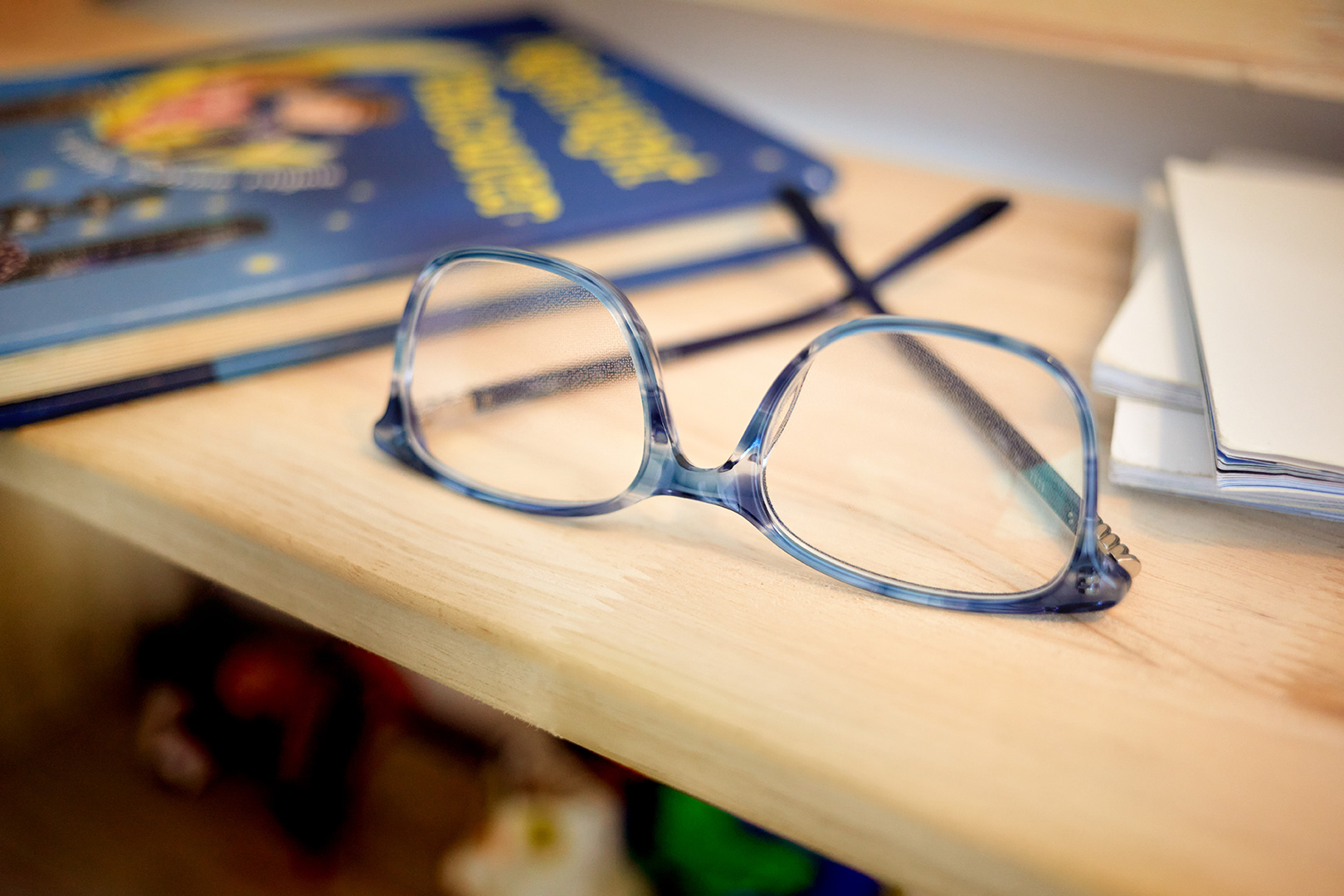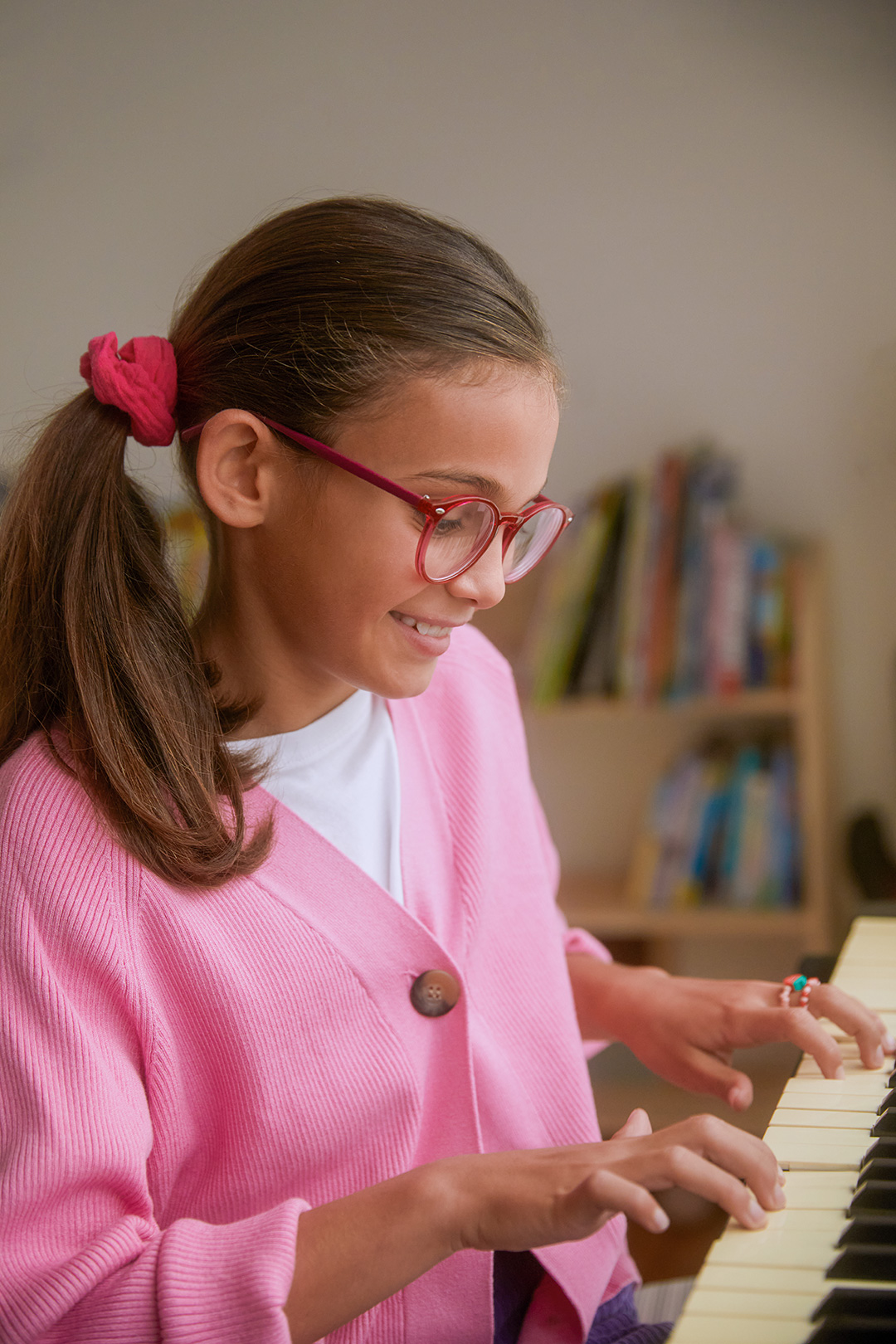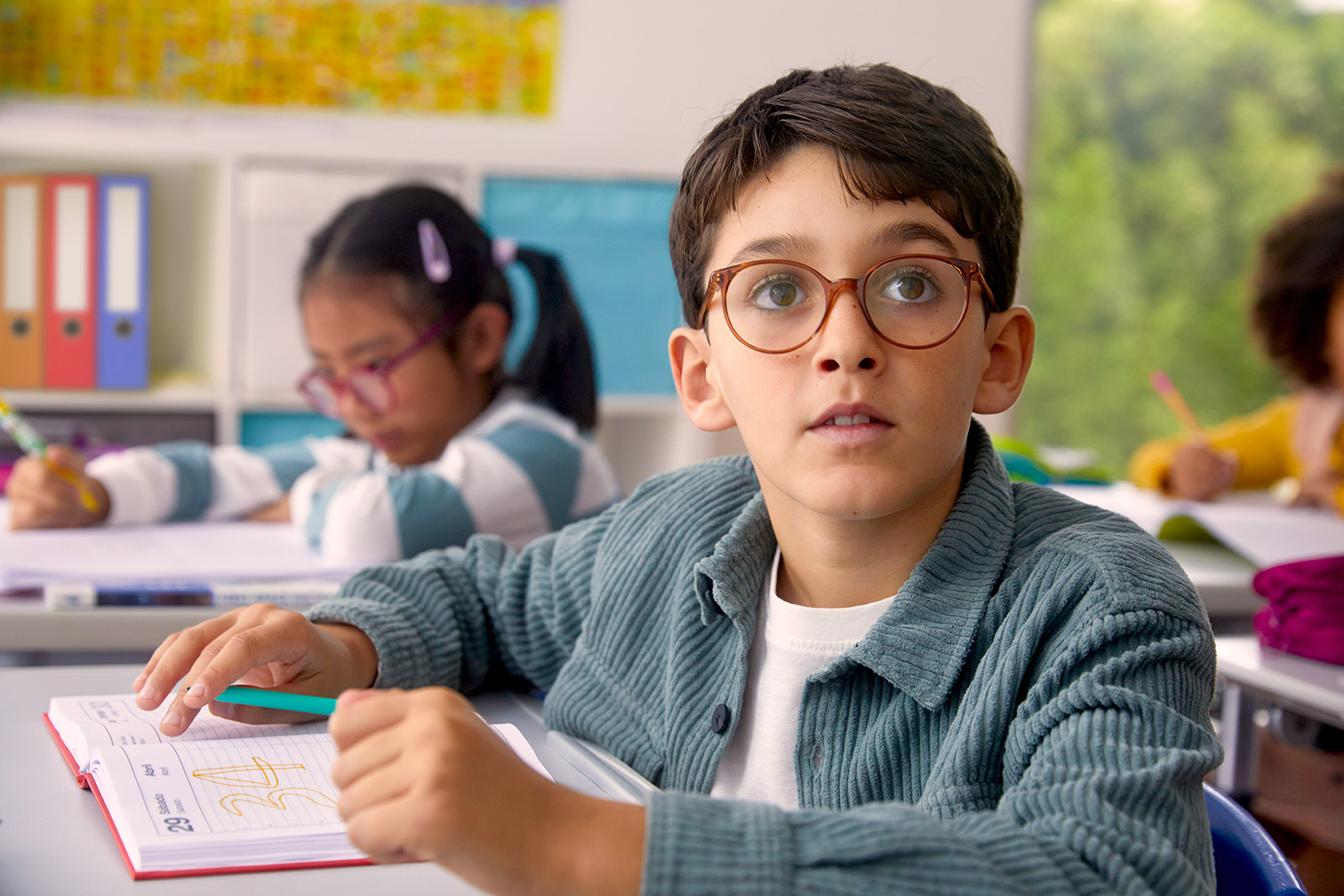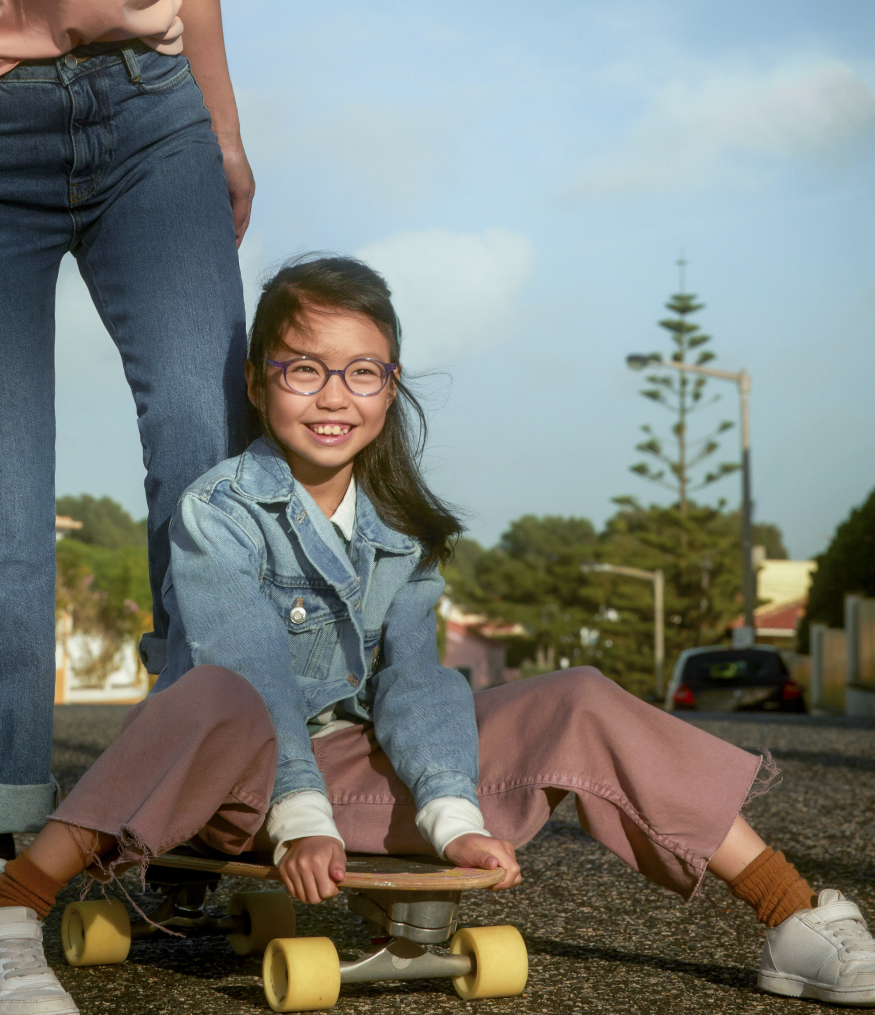
Myopia management for your child

A guide to myopia management for your child
Cases of myopia in children are on the rise around the world. Although child myopia is often seen as a condition that can simply be corrected with glasses it can lead to complications later in life including retinal detachment, glaucoma and cataracts. The earlier your child is diagnosed the better, as it is now possible to slow the progression of myopia, as well as correct it. As soon as your child receives their myopia diagnosis, you’re going to want to begin a process of myopia management with the help of your child’s eyecare professional. This goes beyond the wearing of glasses and will involve managing your child’s environment – outdoor time, screen time (yes we know that’s going to be difficult!) and even bedtime. We have outlined some key advice below to help you manage your child’s myopia.
Myopia treatment options
When your child has myopia, the first treatment option is to wear corrective glasses. The best thing you can do for your child is to choose the best lenses for them. Of course they may be worried about having to wear glasses, but there are ways to make them feel good about that too! We’ll show you how you can do that!
Choosing the best lenses
The best lenses are crucial when it comes to managing your child’s myopia, and as a parent you are obviously going to want to make the best choice for your child. You may well be offered lenses that simply help correct the condition, but it is now possible to help slow the progression of myopia. Ask your eyecare professional about Diffusion Optics Technology™ (DOT) lenses, currently available only in certain markets. DOT lenses use a new and unique technology developed at SightGlass Vision, designed to reduce axial elongation (the scientific term for the elongation of the eyeball).
DOT lenses work thanks to the thousands of micro dots which softly scatter light in order to reduce contrast on the retina. They’re easy and comfortable to wear as they provide clear focus no matter the wearer’s direction of gaze or distance being looked at. A study has demonstrated effectiveness in children as young as 6 years old (1). Two in three kids had no meaningful myopia progression after one year (2). The earlier your child starts using DOT lenses, the more likely it can help slow the progression of your child’s myopia!
Helping your child to feel good in their new glasses
Having to wear glasses can seem like a major change for your child. They may feel nervous or shy about having to wear them. However the more they wear them, the more effective they will be in slowing the progression of their myopia. DOT lenses in particular should ideally be worn for 12 hours a day.
Fortunately, there are lots of things you can do as a parent to put their mind at rest and help them feel great in their new glasses! Firstly, let your child pick the frames they like. They’re the ones who will wear the glasses, so it’s important they feel like it’s their choice!
Give your child plenty of time to try on frames in a range of different styles and colors and give plenty of enthusiastic feedback about how great they look in them. Of course wearing glasses is not all about aesthetics, so explain all the benefits of wearing their new glasses. Maybe take your child to the cinema to show them how wearing glasses makes all their favorite activities so much clearer and better.
Your child’s environment
Making subtle changes to your child’s environment – their outdoor time, screen time and even bedtime – can help to successfully manage their myopia. We’ve put together a list of key behaviors to try and encourage in your child.
Limiting screen time
Yes, we know this one will be difficult! No one is suggesting your child should stop using their computer completely – there’s no need for drastic measures! But try and encourage them to take regular breaks and glance up from the screen from time to time. The 20/20/20 rule is a good one to get them to follow. Every 20 minutes, get them to look at a distance of 20 meters for 20 seconds.
Not holding books and devices too close
Of course it’s not just digital devices that can cause eye strain in your child. It’s a good idea to encourage them to keep an elbow-to-wrist distance between anything they are viewing up close and their eyes. You can help them do this by demonstrating how to do it yourself and getting them to copy you. It’s really very simple – you make a fist and then sit your fist gently against your eyes. The distance from eye to elbow is the distance your child should aim to view objects from.
Spending more time outdoors
Encouraging your child to play outside more often may help their short-sightedness progress less quickly. In fact, spending two hours a day outside may even delay the onset of myopia. Being outside in the natural light appears to protect against myopia, although the exact reasons for this are not yet fully understood. It is thought to be a combination of the brightness of the light and looking at objects at long distances. It may also be in some way related to exposure to UV light on the eye and the retina. Of course being outside is also a great way to reduce screen time!
Getting more sleep
Although the exact reasons remain unclear, lack of sleep and late bedtimes have been linked to the progression of myopia in some studies. It is thought that sleeping late may go hand in hand with reading or being on digital devices in artificial lighting conditions in the evening. Encourage a regular bed time routine for your child and limit screen use before bed. Reading a story could be useful!
Conclusion
As a parent there are many external factors you can manage in order to delay the onset of myopia. If treatment is necessary, your eye care professional will be able to guide you towards the best options for your child.
DOT lenses might be the solution to help slow down the progression of their myopia. If you would like to know more about our lenses then contact our experts!
—————
(1) No clinically meaningful change in refractive error means that there was less than a 0.25D increase in myopia from baseline as measured by cycloplegic autorefraction.(p<0.0001).
(2) Joe Rappon, Carol Chung, Graeme Young, Christopher Hunt, Jay Neitz, Maureen Neitz, Thomas Chalberg: Control of myopia using diffusion optics spectacle lenses: 12-month results of a randomised controlled, efficacy and safety study (CYPRESS)

